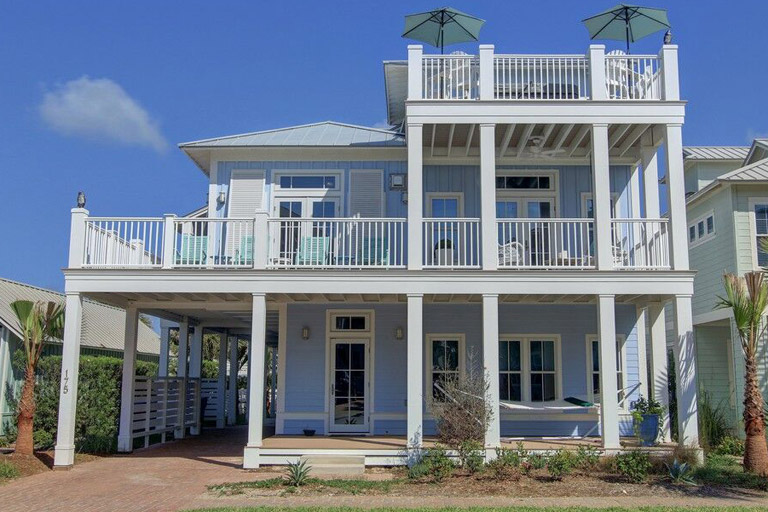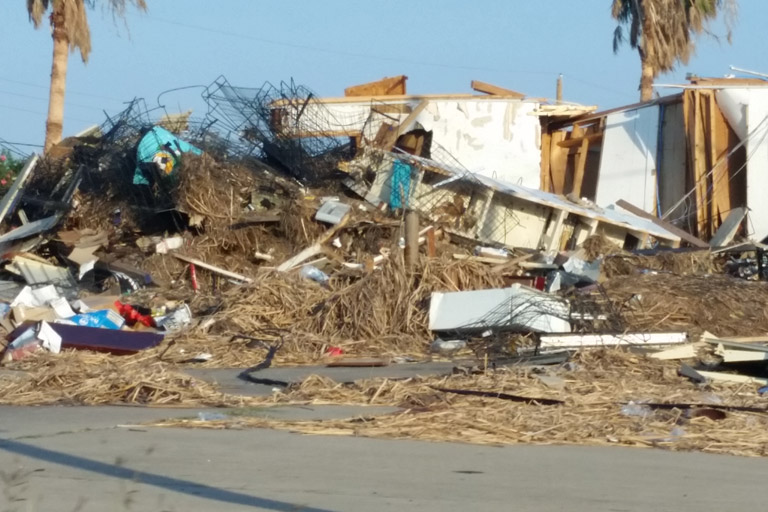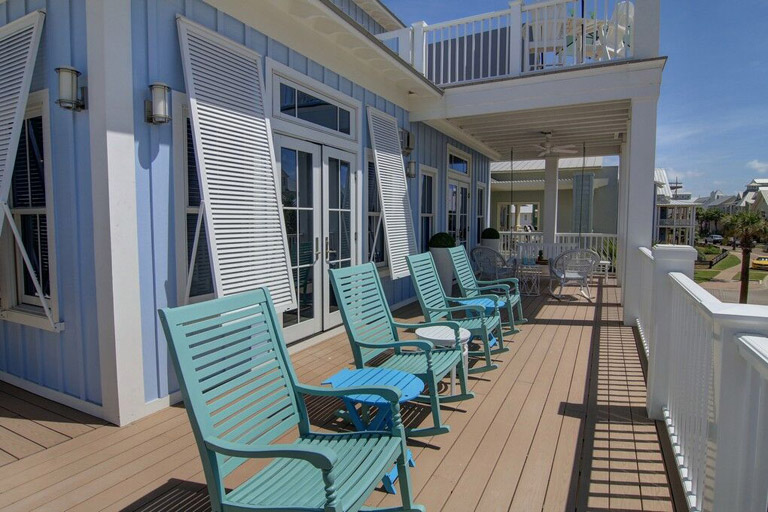
In June of this year, Brenner Design completed the Gruene House, a project we designed in Port Aransas, Texas. The Gruene House (pronounced “green”) is the first LEED-registered beach house on the Gulf Coast. And in August, it was directly in the path of Hurricane Harvey.
As we watched the weather reports here in Indianapolis, we saw predictions that the eye would come dangerously close to Port A, as it’s affectionately known. There was little we could do except pray that the damage would be minimal, and the town would be spared.
Houston’s extreme flooding got most of the media attention following Harvey, and Port A was largely ignored. But Port A took a direct hit from Harvey. The category 4 hurricane made landfall, winds reached 132 mph, and an eight-foot-tall tidal surge from the bay ransacked the town.
Buildings were gutted or completely destroyed. Fishing piers and marinas disintegrated, and boats and other watercraft were scattered over land. Harvey tore down all the power lines into town, and wiped out gas and water service, plus phone and internet, for weeks after the storm. Even the local pelicans and terns seemed stunned. (Aerial view, here.)

In early October, our staff visited Port A to help residents by volunteering with our manual labor. We saw first-hand the results of the havoc waged by Mother Nature. Photos do not begin to convey the sheer devastation. Mountains of debris, including appliances, furniture, and more, lined almost every street in the town. Only two restaurants were open. A temporary food pantry was set up for construction workers. Ninety percent of the businesses were shuttered.
Miraculously, the Gruene House survived, in part because of luck. Harvey’s winds came from the north, so the Gruene House was shielded by other homes. The storm surge did not reach the home, and no wind or water came over the dunes from the Gulf.
We also credit the post-Harvey condition of the house to the type of construction materials used and conformance with newer building codes and windstorm requirements. The “envelope” of the house (its walls and roof) is constructed of six-inch-thick Structurally Insulated Panels (SIPs), and all the windows and doors utilize hurricane glass. The roof did not suffer any “lift,” so no water infiltrated, as happened to some of the other traditional stick-built homes in the same development. The high-quality exterior paint still looks new, even though hurricane winds have a sandblasting effect on exterior surfaces.
Also, the house was designed as breakaway construction in case of storm surge flooding.

In the end, the Gruene House lost only one piece of exterior trim (on a trellis) and one rail post cap.
The painful process of cleaning up in order to rebuild was just starting when we were there. We are optimistic that this beautiful little town will rebuild and that all its residents decide to remain.
Cinnamon Shore, the community where the Gruene House is located, set up a special fund for Port A, and 90 percent of the money goes directly to help the townspeople. Brenner Design is proud to contribute. You can donate here.
Brenner Design also acknowledges the vendors and manufacturers who supplied the quality materials that kept our project safe. Without them, the Gruene House might be severely damaged or gone completely.
- SIPS panels: Noark Enterprises, Inc.
- Windows/doors: Jeldwyn, Allen and Allen Company
- Decks and railings: Azek, ProBuild
- Exterior: Hardi Panel, ProBuild
- Paint: Benjamin Moore Aura, Lone Star Lumber
- Bahama shutters: Port A Storm Shutters
For more information on the Gruene House (and to spend your vacation dollars in an area that can use them!), click here.